Dipladenia is a genus of tropical and subtropical flowering plants native to Central and South America, with stunning trumpet-shaped flowers that come in shades of pink, red, and white. They are commonly grown as decorative plants and are easy to care for, making them a popular choice for novice and experienced gardeners.
Dipladenia plants are shrub-like, branching plants that can produce an abundance of beautiful flowers and add a touch of tropical elegance to any garden or indoor space.
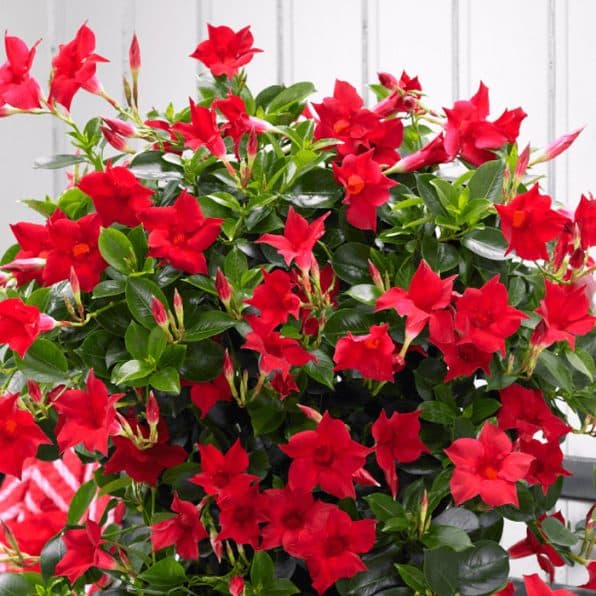
What is a Dipladenia Plant?
Dipladenia is a genus of tropical and subtropical flowering plants that belong to the Apocynaceae family. They are native to Central and South America, and most, in particular, Brazil, but can be found as far north as southwest North America.
Dipladenia plants typically have woody stems with glossy green leaves and produce trumpet-shaped flowers that come in shades of pink, red, and white. In a magnificent show of color, the flowers can grow up to 3 inches in diameter.
The name “Dipladenia” is derived from the Greek words “diplas” and “adenos,” which mean “double gland,” referring to the two glands at the base of each leaf. The plant is also commonly known as Brazilian jasmine, although it is not related to true jasmine.

Dipladenia plants prefer warm and humid conditions and can be grown both indoors and outdoors. They require well-drained soil and plenty of sunlight to thrive. When grown outdoors, they can be used as groundcovers, borders, or trained to climb trellises, walls, or fences. When grown indoors, they can be grown in hanging baskets to create stunning waterfalls of color.
Dipladenia plants are a great way to attract hummingbirds and butterflies, and bees, making them an excellent addition to any pollinator-friendly garden.
Dipladenia Plant Basics:
| Common Name: | Dipladenia, Rock Trumpet, Brazilian Jasmine, Funnel Flower |
| Botanical Name: | Mandevilla spp. |
| Plant Type: | Tropical vine |
| Size: | 1-2 feet tall and 2 feet wide |
| Light: | Full sun |
| Soil: | Sandy, loamy, and well-draining |
| Water: | Weekly watering |
| Vulnerabilities: | Aphids, spider mites, mealy bugs, leaf spot, botrytis blight, fusarium wilt, powdery mildew and phytophthora root rot |
| USDA Growing Zones: | 9 -11 |
How to Care for a Dipladenia Plant
To care for a Dipladenia plant, you need to provide it with adequate water, sunlight, and nutrients. Proper pruning and pest management are also essential for maintaining the plant's health and appearance. By following these care tips, you can help ensure that your Dipladenia plant stays healthy and produces an abundance of beautiful blooms.
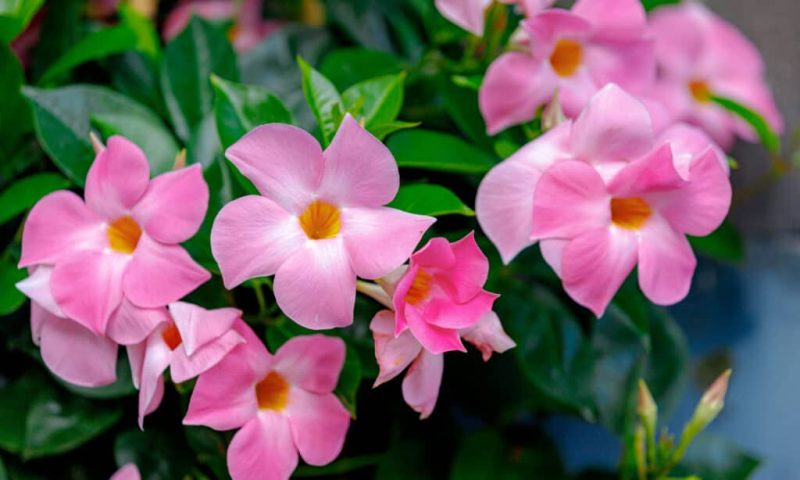
Dipladenia Soil guide
Dipladenia plants prefer well-draining soil that is rich in organic matter. A good quality potting mix or a blend of sand, peat moss, and perlite can provide the ideal growing environment for Dipladenia. It's essential to avoid using heavy clay soils, which can retain too much moisture and lead to root rot.
Amending the soil with organic matter can improve soil fertility and drainage. A combination of loam and sand is going to work well with a pH level ranging between 6.6 to 7.8. Providing plenty of organic material in the mixture will keep the nutrient levels high.
An important note to remember is that you will need to repot your plant with fresh soil once a year if you are growing your Diplandia in a container.
Water Needs
Dipladenia plants need consistent moisture to thrive, but overwatering can cause root rot and other issues. As a general rule, water your Dipladenia when the top inch of soil feels dry to the touch.
When watering, ensure that the soil is thoroughly saturated, and allow any excess water to drain away from the pot's drainage holes. Watering once a week should be sufficient, but do take into consideration that hotter, drier days can make it necessary to adjust the frequency.
Lighting
Dipladenia plants require plenty of sun and can handle full direct sun for about 6-8 hours a day when grown outdoors and in the ground. When grown indoors and in containers the requirements change somewhat.

Indoor and container-grown Dipladenia like a more indirect sun with about the same amount of hours. They love the sun but not the scorching midday sun, so if you don't want to be moving your plants around a lot choose a spot where they can have bright, indirect light and shade when the sun is at its peak.
Temperature & Humidity Needs
Dipladenia plants are tropical plants and prefer warm temperatures between 65-85°F (18-29°C) during the day and slightly cooler temperatures at night. They can tolerate some temperature fluctuations but prefer to avoid extremes.
In terms of humidity, Dipladenia plants prefer moderate to high humidity levels, which mimic their natural tropical habitat, but they seem to be able to tolerate less than humid conditions. But with that being said they do better when there is humidity present. If growing Dipladenia indoors, consider placing a humidifier nearby to maintain adequate humidity levels or misting the air can also be an option.
Fertilizing Dipladenia Plants
Dipladenia plants benefit from regular fertilization during the growing season to promote healthy growth and abundant blooms. Use a balanced, water-soluble fertilizer with equal parts nitrogen, phosphorus, and potassium, such as a 10-10-10 or 20-20-20 fertilizer. Although it might be better to use a 10-30-20 when it's in full bloom to feed the flowers.
Purchase Blossom Booster Fertilizer Here
Fertilize your Dipladenia plant every two weeks during the growing season, reducing the frequency to once per month in the fall and winter months when the plant is dormant. Follow the instructions on the fertilizer package carefully, as over-fertilization can damage the plant and cause leaf burn or other issues.
It's also important to ensure that the soil is moist before applying fertilizer to prevent burning the plant's roots. Water the plant thoroughly before and after applying fertilizer to ensure that it is properly absorbed.

Pruning Dipladenia Plant
Dipladenia plants benefit from regular pruning to maintain their shape, promote healthy growth, and encourage abundant blooms. Prune your Dipladenia plant in early spring before new growth appears or after the plant has finished blooming in the fall.
To get a bushier plant you can pinch back the new growth slightly above the leaf node.
Propagation Method
Dipladenia plants can be propagated through vine cuttings taken in the spring or early summer when the plant is actively growing. To propagate your Dipladenia plant with cuttings, follow these steps:
- Choose a healthy stem on your Dipladenia plant that is about 6 inches long and has at least two leaves. Use sharp, clean pruning shears to make a clean cut just below a leaf node.
- Remove the leaves from the bottom 2 inches of the stem, leaving only a few leaves near the top.
- Dip the cut end of the stem into rooting hormone powder to encourage root growth.
Side note: Be careful with the sap that leaks from the cuttings, it can be a skin irritant, it might be best to wear gloves.
- Plant the stem cutting in a pot filled with a well-draining soil mix. Water the soil well, and cover the pot with a plastic bag to create a humid environment.
- Place the pot in a bright, warm location out of direct sunlight. Keep the soil moist but not waterlogged, and mist the cutting occasionally to increase humidity.
- After 4-6 weeks, the cutting should have developed roots and new growth. Remove the plastic bag and gradually acclimate the new plant to its surroundings.
Root Division
The Dipladenia can also be propagated during repotting by root division. Look for the points on the root where new growth has begun to sprout. Break away the new section and plant into a new pot, covering it with a few inches of soil.
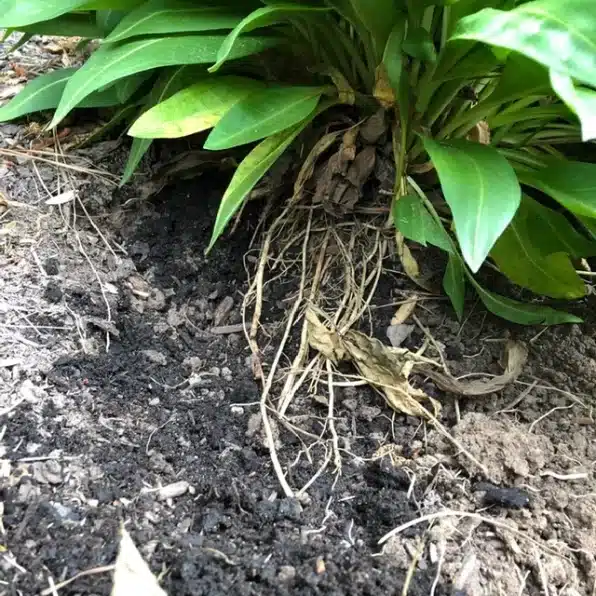
Dipladenia Plant Varieties
Dipladenia ‘Rio' – This variety produces bright pink flowers that bloom continuously throughout the growing season. It has a compact growth habit and is well-suited for use in containers or as a bedding plant.
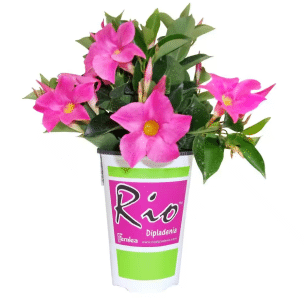
Dipladenia ‘Sundaville Red' – This variety produces large, bright red flowers that bloom from early summer to late fall. It has a vigorous growth habit and is well-suited for use as a climber or as a hanging basket plant.
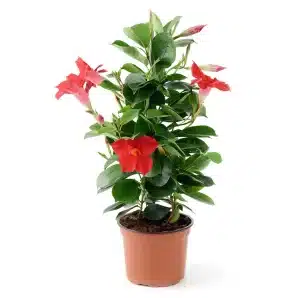
Dipladenia ‘Pink Diamond' – This variety produces soft pink flowers that bloom from early summer to fall. It has a compact growth habit and is well-suited for use as a container plant or in a mixed border.
Dipladenia ‘Deep Red' – This variety produces deep red flowers that bloom from early summer to fall. It has a bushy growth habit and is well-suited for use as a bedding plant or in a mixed border.

Dipladenia ‘Antarctica' – This variety produces white flowers that bloom from late spring to fall. It has a trailing growth habit and is well-suited for use in hanging baskets or as a groundcover.

Common Problems with Dipladenia Plant
Dipladenia plants are generally easy to care for, but like any plant, they may encounter some problems. Here are a few common issues that gardeners may face when growing Dipladenia plants and how to address them.
Growing
Growing problems can occur when all the proper requirements aren’t being met for your Dipladenia. Overwatering, under fertilizing and over-fertilizing, disease, and pest can all contribute to the growth or lack thereof with this plant.
Hardy as it may be, it needs to be maintained correctly and care be given to the specific needs of this plant. Winter care and summer feedings are important factors in the growth of your Dipladenia.
Diseases
- Powdery mildew – A fungal disease that appears as a powdery white coating on leaves, stems, and flowers. It can be caused by high humidity or poor air circulation.
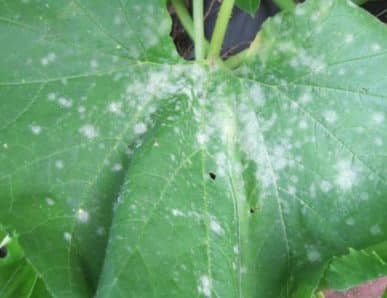
- Black spot – Another fungal disease that causes black spots to form on the leaves. It's often caused by overwatering or poor air circulation.
- Botrytis blight – A fungal disease that causes flowers to turn brown and rot. It can be caused by high humidity and wet conditions.

- Root rot – A condition caused by overwatering, which leads to the roots rotting and the plant wilting.
- Bacterial wilt – A bacterial disease that causes leaves to yellow and wilt. It can be spread by insects or contaminated soil.
- Viral infections – Dipladenia plants can be susceptible to viral infections, which can cause stunted growth and distorted leaves.
It's important to identify and address any diseases promptly to prevent them from spreading to other plants in the garden. Pruning infected plant parts, improving air circulation, and ensuring proper watering practices can help prevent and treat many diseases. Fungicides or other treatments may also be necessary in severe cases.
Pests
- Spider mites – Tiny insects that suck the sap from the plant, causing leaves to turn yellow and dry out. They often spin webs on the plant.
- Whiteflies – Small, winged insects that can infest the plant and cause leaves to yellow and fall off. They are often found on the undersides of leaves.
- Mealybugs – Small, white, cottony insects that can infest the plant and weaken it. They often cluster on the stems or leaves.
- Aphids – Small, soft-bodied insects that suck the sap from the plant and cause leaves to curl or distort. They often congregate on new growth.
- Scale insects – Tiny, hard-shelled insects that can infest the plant and cause yellowing or browning of leaves. They often cluster on the stems or undersides of leaves.
- Thrips – Tiny, slender insects that feed on the plant and cause stippling or discoloration of leaves. They are often found on flowers.
- Caterpillars – Larvae of butterflies or moths that can eat holes in leaves or flowers, causing damage to the plant.
Some ways to keep pests at bay are:
- Watering at ground level
- Diatomaceous earth
- Neem oil (with discretion because it affects beneficial bugs as well)
- Insecticidal soap
Dipladenia Plant Fun Facts
- Dipladenia plants are pollinated by hummingbirds, which are attracted to their brightly colored flowers and sweet nectar.
- The sap of the Dipladenia plant can cause skin irritation in some people, so it's important to handle the plant with care. Not so fun, but still a fact.
- Dipladenia and Mandevilla are sister plants, the former more of a bushy model while the latter is more vine-like.
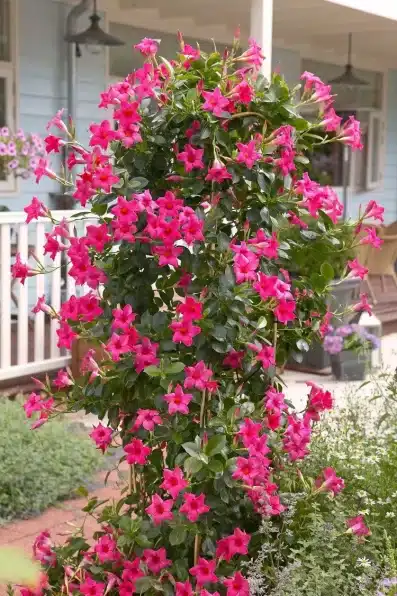
FAQ’s
Is Dipladenia a climbing plant?
The Dipladenia does not climb, it is more of a bush variety.
Are Dipladenia and Mandevilla the same plant?
While the names have been changed to reflect the Dipladenia as a separate plant, it is still in the Mandevilla genus and often the names are interchangeable.
Can you plant Dipladenia in the ground?
Yes, the Dipladenia grows quite well in the ground in warmer areas like zones 9 – 11 or any frost free areas. Plant it in full fun where it receives 6-8 hours of light.
Where can I buy a Dipladenia plant?
Dipladenia can be found online, on Amazon, and Etsy, as well as gardening center websites , and big box garden centers like Home Depot.



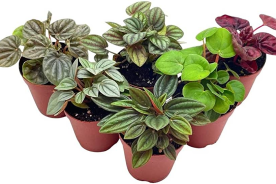
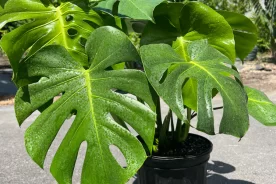

No Comments